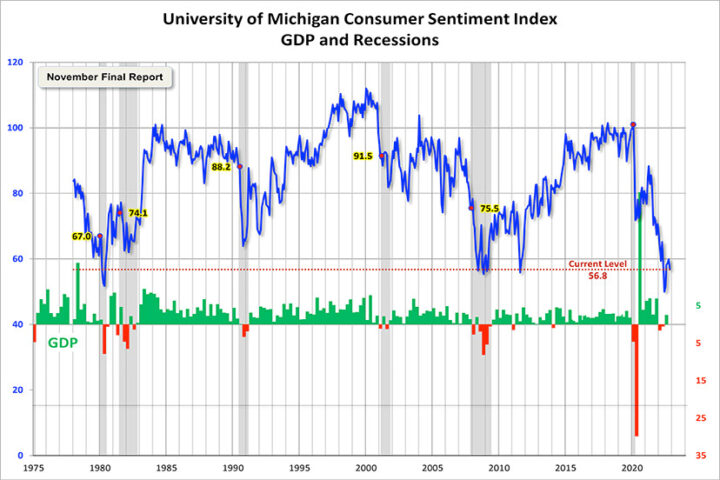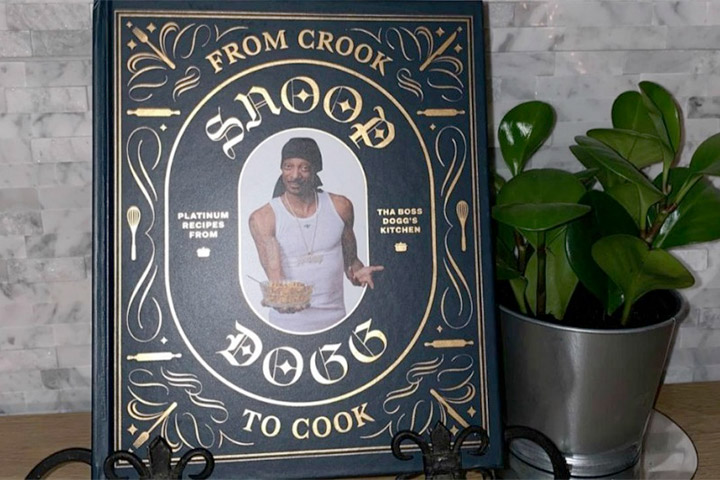There are actually several groups of people who get paid to spend their lives measuring, and offering opinions about, consumer confidence.
One group, the Conference Board, has been measuring and opining on consumer confidence since 1967, so you might assume they’ve got it down to a science by now. Basically, they ask people (presumably, consumers — but who’s not a consumer these days?) how they are feeling about consuming, and then they attach a number to the answers and average it all out, and call it the ‘Consumer Confidence Index’.
Unfortunately, the Conference Board doesn’t like people sharing their graphs without asking permission, even though they’re a non-profit. And since I hate asking permission (in almost any situation) I’m going to share, instead, a graph created by the University of Michigan.
I would’ve thought a non-profit would be less uptight than a university. Just goes to show how little I know about this stuff.
The University of Michigan graph (which, we note, describes itself as an index of “Consumer Sentiment” which may or may not be the same thing as “Consumer Confidence”) indicates that our sentiments are about as bad as they get, at the end of 2022. There’s only been a couple of other times over the past 50 years when our sentiments dropped below ’60’. During the Recession of 1980, inflation hit nearly 15%, so we can understand why consumer sentiment was in the toilet. And on top of inflation, unemployment was at 8% and headed even higher. As noted, this was in 1980.
Guess that’s what happens when you have a Democrat (Jimmy Carter) as President.
The next time we consumers felt quite so negative about the U.S. economy was during the 2008-2010 Great Recession. (When Barack Obama was President.)
(Are we seeing a pattern here?)
The reason these people are interested in consumer sentiment (or confidence) has something to do with how much consuming can be expected. When Americans are confident about the near future (or alternately, when we are feeling sentimental?) we tend to spend more money, which causes the factories in China to ship more goods to America, so stores can sell them to us, marked up appropriately.
The most important time of the year for consumers to feel confident about the near future is at Christmas. This year, what with all the supply chain problems, and the lack of employees, and the inflation, the stores did something kind of daring. They greatly increased their inventories in advance of the holidays, because no retailer wants to run out of Magnesium Body Butter Lotion Bundles ($49) or Temperature Control Smart Mugs ($120) or Bose Audio Sunglasses ($99), in December.
Heaven forbid they would run out of Snoop Dogg’s new cookbook, “From Crook to Cook”. (With a forward by Martha Stewart, no less.)
But, were the retailers paying any attention to the University of Michigan Consumer Sentiment Index? Or the Conference Board’s Consumer Confidence Index?
Because the theory is, when consumers have less confidence, they consume less.
I’m not a retailer, so I don’t know what data retailers look at. But if I were a retailer… just saying.
The Washington Post-ABC News team take a slightly different approach, with a ‘Consumer Comfort Index’ that surveys consumers, asking them “to rate the condition of the national economy, the state of their personal finances, and whether now is a good time to buy things.”
I would think now would be a very good time to buy things, before the price goes up even more. But apparently, that’s not how consumers typically behave. They consume when they are ‘comfortable’.


